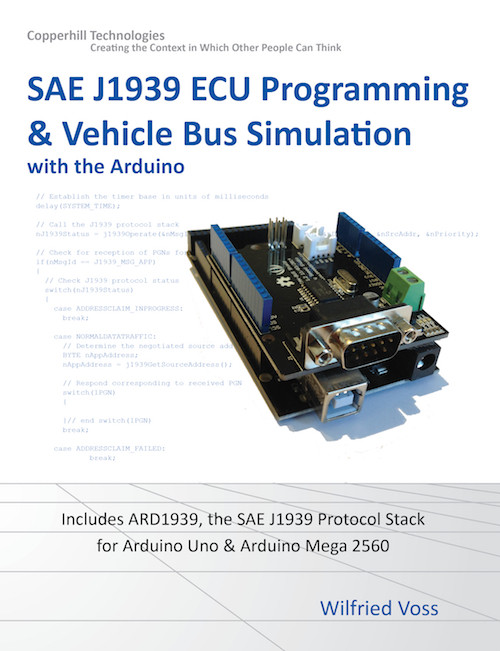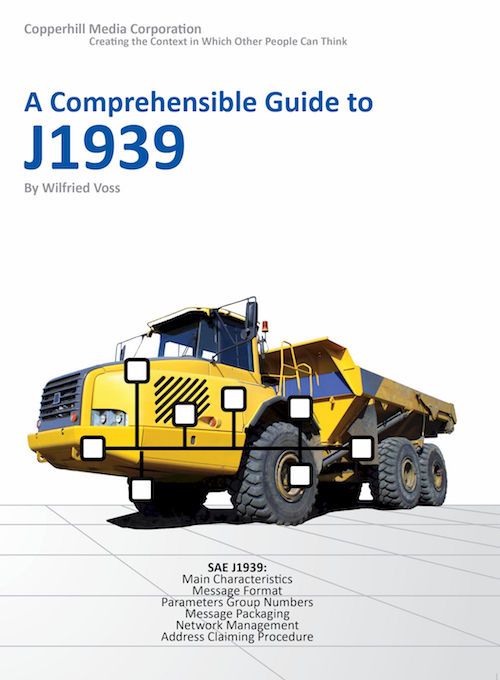Recent Posts
SAE J1939 Programming with Arduino - SAE J1939 Monitoring And Simulation
Posted by on
This post is part of a series about SAE J1939 ECU Programming & Vehicle Bus Simulation with Arduino.
As I wrote before, both versions of the Arduino used in this book, the Uno and the Mega 2560, are well suitable for SAE J1939 monitoring and simulation projects.
Until now, the simulation of SAE J1939 data traffic involved the purchase of expensive simulation devices, not mentioning the associated steep learning curves. All this changes with the Arduino’s easy-to-use hardware and software solutions.
Writing SAE J1939 monitoring and simulation examples for the Arduino is a matter of a few hours or even less when using the following programming samples as a template.
Note: All Arduino projects (Sketches) as introduced in the following will use the Serial Monitor at a baud rate of 115,200 bit/sec (See also my remarks in chapter “Serial Interface And CAN Bus Timing Considerations”).
SAE J1939 has become the accepted industry standard and the vehicle network technology of choice for off-highway machines in applications such as construction, material handling, and forestry machines. J1939 is a higher-layer protocol based on Controller Area Network (CAN). It provides serial data communications between microprocessor systems (also called Electronic Control Units - ECU) in any kind of heavy duty vehicles. The messages exchanged between these units can be data such as vehicle road speed, torque control message from the transmission to the engine, oil temperature, and many more.
A Comprehensible Guide to J1939 is the first work on J1939 besides the SAE J1939 standards collection. It provides profound information on the J1939 message format and network management combined with a high level of readability.
 Loading... Please wait...
Loading... Please wait...


